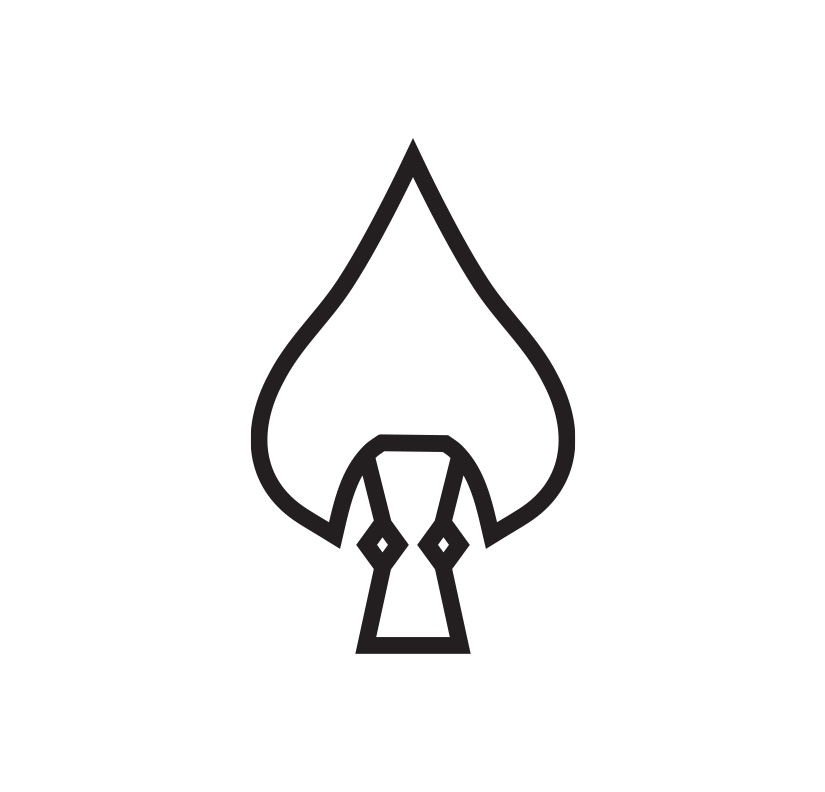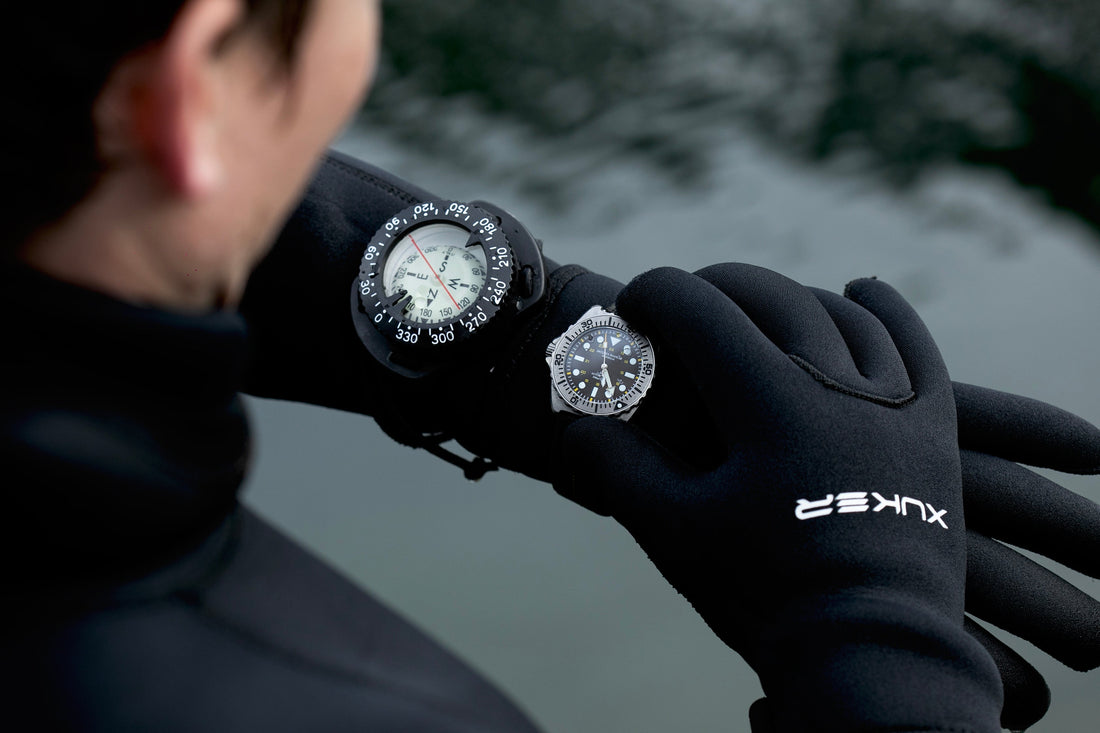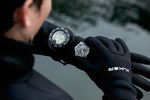Every watch nerd dreams of having a hand in designing their own watch, and when an independent brand with intriguing military associations partnered with a friend of ours to create a watch that feels tailor-made for our community, we were interested. While we normally don’t cover new releases, this is exactly the kind of story we like to tell.
Brock Stevens is a US Navy Diver and part of the photography team at W.O.E. He’s also an EDC nerd who has helped in the development of several of our custom tools, including the Birdwatcher and the Submersible Wrist Compass. When we heard Brock was leaning into his diving experience and design ethos to develop a dive watch, we asked him to tell the story of the design process and how the watch was informed by his experience in the Navy as well as his deep appreciation for the utility of mechanical watches.
- W.O.E
A US Navy Diver and EDC enthusiast customizes a niche French military dive watch to suit his underwater workplace
By Brock Stevens
Jacques Bianchi Marseille - The Story
Long before I joined the US Navy in December of 2018, the story of this watch began in Marseille in the 1980s. Jacques Bianchi’s family business had, for generations, repaired and serviced watches for professional dive companies, such as COMEX, famous adventurers such as Jacques Cousteau, and numerous French military units. Building upon this experience, Jacques Bianchi set out to design and produce his own collection of hard-use tool watches, a process that culminated with the JB200 in the early 1980s.

An original JB200 pictured alongside its modern recreation. (Photo Credit: Jacques Bianchi Marseille)
The original JB200 was defined by its 42-millimeter Monnin case, left-sided destro crown orientation, and distinctive frogman graphic printed on the dial. Diving-specific units from the French Marine Nationale would be among the first to field the JB200, placing a 60-unit order in 1982.
Jacques Bianchi created the JB300 at the request of the French Army’s dive school in 1993, with an initial production run of approximately 300 units. Subsequent orders from the French Army pushed total production to around 1000 units in circulation. While its numbers were limited, the JB300 went on to have a successful career, serving as the preferred timing instrument on the navigation boards and wrists of French Army Combat Divers.

A JB300 on the wrist of a French Army Combat Diver.
Despite the appreciation of the brand’s military heritage among die-hard collectors, Jacques Bianchi eventually ceased production, lying dormant for years before a new generation of French watch enthusiasts relaunched the brand in 2021 with a reissue of the JB200.
In 2024, the revived Jacques Bianchi followed up with a near 1:1 recreation of the JB300. I had the opportunity to use the new JB300 as a tool for several working dives, and as someone who dives for a living, it was easy to see that this design was produced with underwater use top of mind, as capable in 2024 as it was in the mid-1990s.

The JB300 was reintroduced in 2024. (Photo Credit: Jacques Bianchi Marseille)
A Navy Diver Designing A Dive Watch
As I transitioned from active duty Navy to the reserves in 2024, my day-to-day changed from servicing and maintaining submarines, ships, and aircraft carriers to the watch industry. Still, I carried my lessons learned with me. A lot of dive watch marketing is, quite frankly, fluff, and it doesn’t take long to separate fact from fiction in six inches of visibility under a 1092-foot-long Nimitz-class aircraft carrier. When it comes to tools in the Navy, the culture is clear: keep it simple, keep it reliable, and keep it if it works.

Brock pictured during US Navy dive school wearing a KM 37 diving helmet. (Photo Credit: Brock Stevens)
When Jacques Bianchi approached me to assist in designing a watch based on my experience in Navy Diving, these lessons guided every decision in what would become the JB300 Profonde.
The JB300 Profonde
Using the established and effective JB300 as a starting point, I took the opportunity to take the design a few steps further, integrating a few specific traits I’d found useful during my Navy diving career as well as a new material for the case. The result of our extensive prototyping and testing process is the Profonde, which my friends at Jacques Bianchi tell me means “deep” in French, a reference to the watch’s intended environment.
The Case & Bezel

(Photo Credit: Brock Stevens)
Where the standard JB300’s case is stainless steel, I opted for grade 5 titanium for the Profonde, which was chosen for strength, lightness, corrosion resistance, and its non-magnetic signature. Of those attributes, corrosion resistance was central because I often surface after working in the ballast tank of a submarine covered in termalene grease or other potentially corrosive chemicals found in an underwater industrial environment.
Rather than an elegant mix of brushing and polishing, which is easily marred, we chose a “stonewashed” finish achieved with a blasting process, giving the watch the look of an old piece of gear that has already proved itself as part of your dive kit. In a diving environment, the texture is familiar, like the patina on a well-used scuba tank that has seen years of service at your local dive locker.
Also made from grade 5 titanium is the bezel, which emulates watches like the Doxa Sub with unidirectional bezel teeth that provide optimal grip while wearing thick gloves.
A “Destro” Left-Handed Crown
Swapping convention for comfort, I always knew I would want a “destro” or left-handed crown for my version of the JB300. Comfort and pragmatism take priority after hours underwater, or working in tight spaces inside a submarine. It may seem like a small thing having the crown make contact with back of your hand, but the last thing you need is a hot spot after hours in cold water. A diver’s skin and hands are already being torn up underwater, and what start as minor annoyances can easily add up to an unpleasant experience.

A Legibile Non-Date Dial & the Importance of Luminescent Material
Starting with the original JB300’s MAXI dial layout, we modified the design for a non-date format. When working in the water, a date function is superfluous, and telling the time at a glance is all that matters. We then added a raised chapter ring with yellow accents on the five-minute indices that pop especially in low light, with the secondary printed 24-hour markings receiving the same yellow treatment. Adding utility while honoring the Navy diving community, the specific shade of yellow is taken from the Navy’s standard KM 37 diving helmet. Given the importance of the helmet, which we call a “hat”, in keeping a diver alive, I think all Navy divers grow fond of the shade over the years.
If you haven’t spent time underwater in industrial environments, it’s difficult to explain how rare good visibility is for working divers. For much of my career, it’s been a challenge to see my hands at the ends of my arms. For a working diver’s watch, having great luminescent material can be the difference between being able to discern the time or not. For my watch, we opted for BGW9 Super-LumiNova for the hour hand and indices, which gives a crisp blue glow. For the minute hand and bezel pip, we used C3 Super-LumiNova, which glows green.

The choice to use two colors comes down to pure function. Blue wavelengths travel farther underwater. The human eye detects green more quickly when moving from light to dark. By combining the two, the most critical references for tracking dive time, the minute hand and bezel pip, will stand out immediately. It is a system that eliminates confusion and allows a diver to read the time at a glance, even in silty or low-visibility conditions of East Coast waters, such as Norfolk, Virginia, where I spent most of my career.
Final Thoughts
Working with Jacques Bianchi came naturally. Professional diving is in their heritage, and there is shared respect for prioritizing function over form in an underwater environment where the smallest details matter. The design has evolved since the JB200 and JB300 of the 1980s and 1990s, but the design philosophy is the same: build a watch to be used and trusted by divers.

Our goal with the Profonde was to create a tool not meant to be kept in a safe or stored in mint condition. It’s a watch for those who understand the dual role played by timepieces, providing utility first and foremost while also developing a sense of shared experience in the scratches, dents, and marks they collect over a lifetime of service.
For me, the JB300 is is the distillation of a lifetime of lessons learned in the water, executed in a format that will feel instantly familiar to those who have spent time in the sea. Fundamentally, the Profonde is a bridge between two worlds: the heritage of Jacques Bianchi and the hard-earned lessons of modern military diving. The best tools are the ones that earn their place.
About The Author: In addition to his work with Project Recover, Brock Stevens is a US Navy Diver, an EDC nerd, and a talented photographer with a deep appreciation for tool dive watches and his 1971 Land Rover Santana Series IIA. Learn more about Brock by heading over to his Instagram page, @deepsea.edc
If you enjoyed this article, please consider signing up for our weekly free newsletter for further updates HERE.
Read Next: Beneath The Surface: Recovering WWII Heroes In Palau









5 comments
Just when I thought I didn’t need another watch… the thought process behind the design of this piece makes me want it more.
The older ones is very similar to CWC watches….
It’s interesting to see the thought behind the different elements of the design. Turns out to be a great looking watch, too. Thanks, Brock!
This watch looks exceptional. Kewl
This watch looks exceptional. Kewl